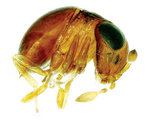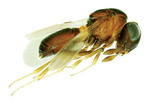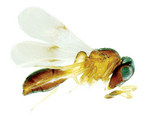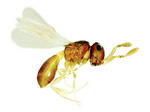The great wasp hunt is on
 Science Science
The University of Adelaide, together with Ohio State University in the United States, is to lead a multi-million-dollar global survey of a significant group of tiny parasitic wasps. The University of Adelaide's Professor Andrew Austin and Dr Norman Johnson, from Ohio State University, will lead a multinational team from nine countries that has been awarded US$2.6 million (about AUD$3.5 million) from the National Science Foundation in the US under its Planetary Biodiversity Inventory program. The five-year project's main aims are to describe and name all 2500 species of Platygastroidea wasps, to explore poorly known areas of the world rich in parasitic wasps, including forests of Brazil and South-East Asia, the western regions of India and the arid lands of South Africa, and to map their evolutionary relationships using DNA sequences and morphology. "This grant is a once-in-a-career opportunity. No research funding sources in Australia match this. There will be huge scientific research outputs about this group of insects," said Professor Austin, who is Director of the Australian Centre for Evolutionary Biology and Biodiversity, within the University's School of Earth and Environmental Sciences. The Platygastroidea wasps are less than 2mm long but are important for three main reasons: they are frequently used as biological control agents of a range of pests, and it is hoped new control agents will be discovered; as parasites of other insects they are extremely important in maintaining ecological balance; and they are often used as model systems for fundamental research. "There has been a lot of research on mammals and birds because they are so well known," Professor Austin said. "But this project will produce comprehensive information from around the world on these important insects. It will set the framework for a better understanding of the relationships between parasites and hosts, provide insights into the patterns of diversity of parasitic insects and the evolutionary processes involved, and enable the discovery and description of numerous new species, some of which may provide new natural controls for economically important pests." The University's Deputy Vice-Chancellor (Research), Professor Alan Johnson, said: "This is a highly significant project which sets the University of Adelaide firmly in the realm of global research. It will have worldwide impact at not only the research scientist level but also in its applications to agriculture and other industries." Another part of the project will be the establishment of "cyberinfrastructure" - web-based systems for the real-time global sharing of images and information from the research - which will allow efficient and rapid dissemination of results and that could be applied to similar studies of other organisms. There is also an important training aspect - at least one postdoctoral researcher and two PhD students will be taken on at the University of Adelaide - and a public access website will make the results available to the general public for educational purposes. Story by Robyn Mills
|











